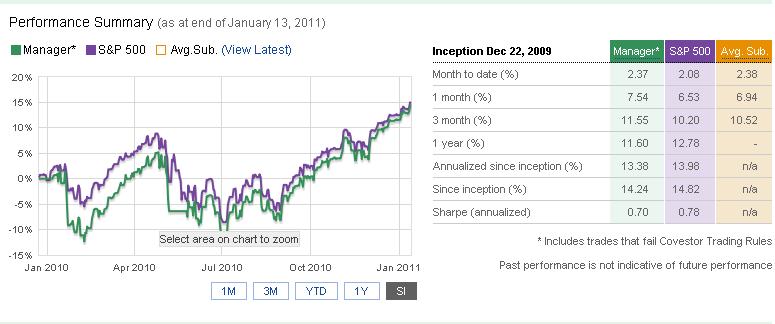This week we spoke with Paul MacNamara of Strategic Investment Partners Wealth Management about his firm and his Capital Appreciation ETF with Covestor.

Covestor LIVE: On the Strategic Investment Partners (SIPCO) website, it states that your firm uses an investment strategy for equity portfolios that is, “…based on empirical research undertaken by the firm’s founder Timothy McIntosh. This research has two facets: sector investing and contrarian investor behavior.” How do you determine what trends to move contrary to? What data factors into that decision?
Paul MacNamara: In the Capital Appreciation ETF Model we use a similar yet different approach than the stock portfolios. We look at macro data to establish longer term trends in the market which guide our “Bullish or Bearish” sentiment. Based on sentiment, we select an Index ETF which we believe will best track the market’s performance and will overweight or underweight based on sentiment.
On a second level we evaluate short term volatility to establish market momentum and use technicals to evaluate market timed trades and leveraging. Moving averages play a key role as well, as significant market moving reports, such as unemployment, Consumer Price Index, Industrial Production, and housing. Based on this analysis we will leverage the portfolio by adding to the Index position or using various sector ETFs. Typically, when sector ETFs are used they tend to be short term trades to increase performance while assuming more risk in a leveraged position.
CL: Let’s take a look at your most recent trade. What were some of the macroeconomic events that factored into your decision to sell iShares MSCI Emerging Markets Index Fund (EEM) in August?
PM: The Emerging Market ETF (EEM) trade is an excellent example on how we use technical data and sector ETFs to provide Alpha for our clients. The Macro Events of August provided significant volatility and the S&P 500 dropped about 7% in the month (CL Note: the S&P 500 closed at 1,127.24 on August 4th, then at 1,048.92 August 30th). The major market moving news in August was actually domestic as the U.S. Economy hit a patch of negative data points. The economic weakness was pumped into the media and fear of a double dip recession gripped the markets. Using technical analysis we saw opportunity in the Emerging Market sector. We remained bullish on the global recovery particularly the strong growth in the Emerging Market as well as Brazil, Russia, India, and China (BRICs). The sell off provided opportunity and we purchased EEM on the weakness in U.S. Markets. This short term sector trade (in conjunction with our core position) netted our Model a 1% outperformance over the S&P 500 in the month of August.
CL: With only one position in the model currently (ProShares Ultra S&P 500 (SSO)), how do you plan to hedge against potential market volatility?
PM: Using SSO, the two times leveraged S&P 500 index, allows us to hedge against market volatility as it provides ready available cash in the account to hedge. By freeing up cash using a leveraged ETF, such as the SSO, we have a ready and available cash balance in the account. This cash position can be used to provide protection in volatile markets by purchasing a leveraged inverse ETFs. By establishing a collar position, (market neutral, parity between long and short) we can provide downside protection until market indicators provide further clarification.
*Prices courtesy of Yahoo Finance.


